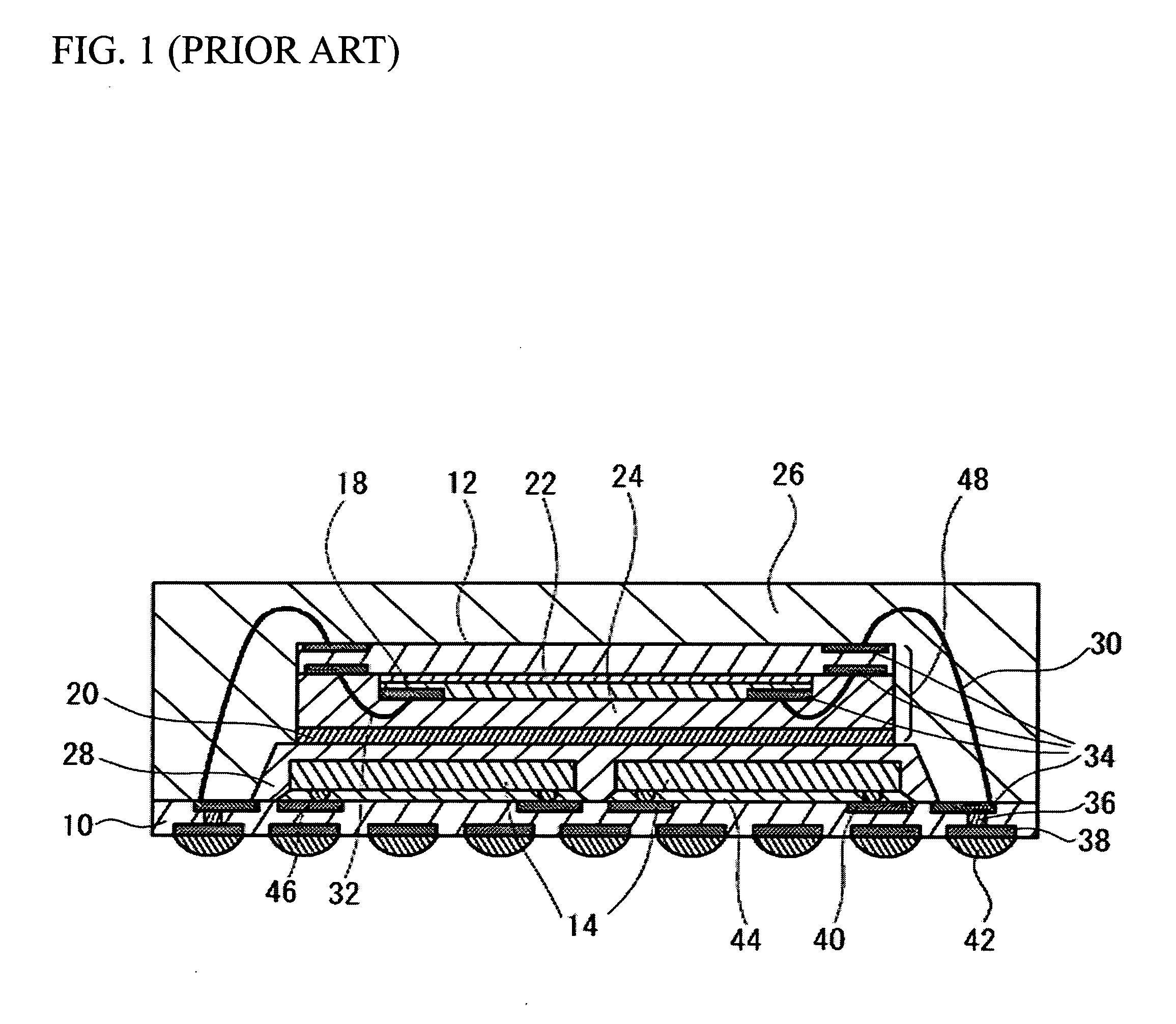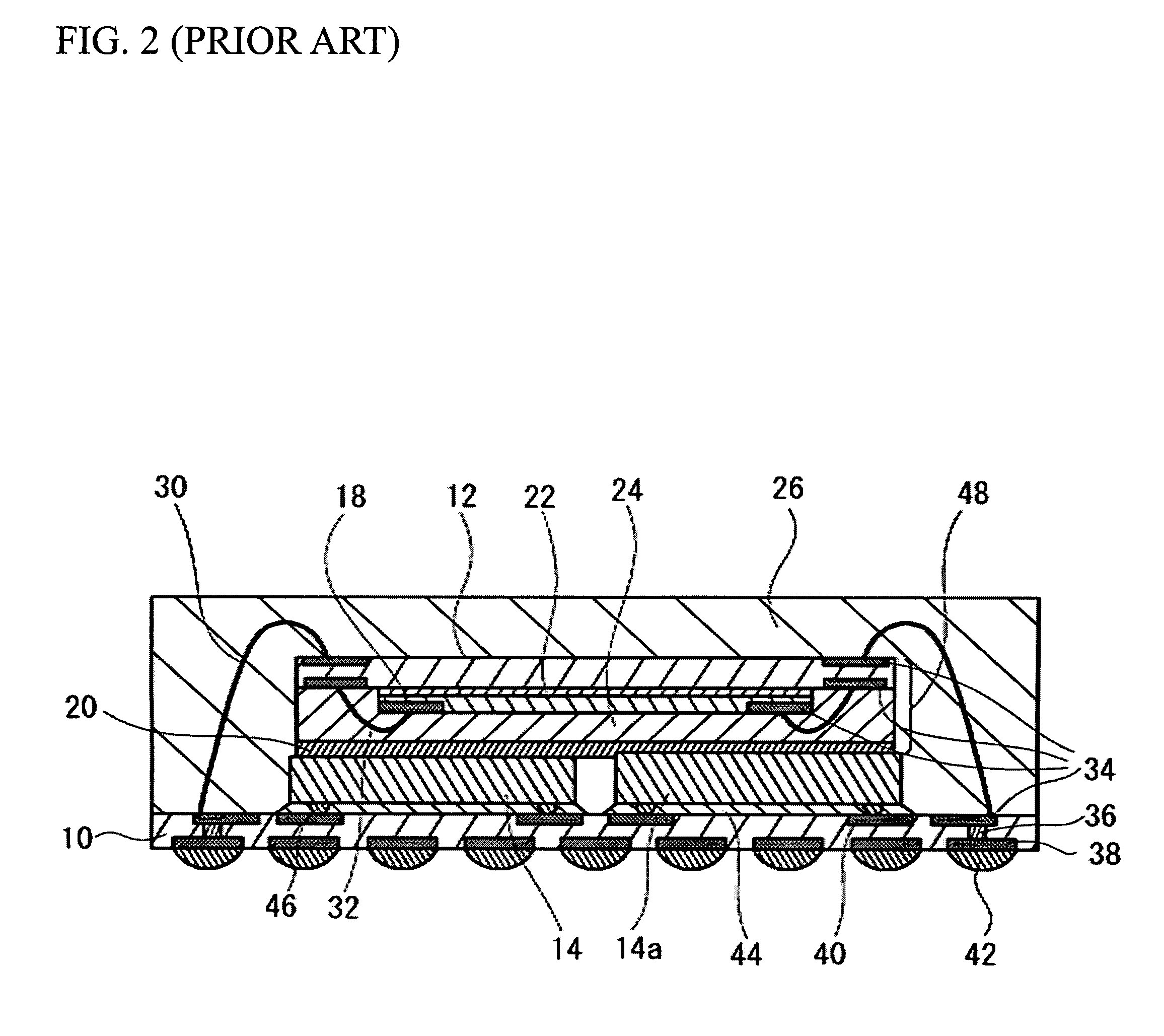Semiconductor device and method of manufacturing the same
a semiconductor device and semiconductor technology, applied in the direction of semiconductor devices, semiconductor/solid-state device details, electrical devices, etc., can solve the problems of reducing limiting the reduction of the height of the semiconductor device, and difficult to connect the wire stably, so as to minimize the damage to the side surface of the semiconductor element, improve the yield ratio of the semiconductor device, and minimize peeling
- Summary
- Abstract
- Description
- Claims
- Application Information
AI Technical Summary
Benefits of technology
Problems solved by technology
Method used
Image
Examples
fourth embodiment
[0051]As shown in FIG. 7 and FIG. 8, in a semiconductor device in accordance with the fourth embodiment, the entire upper surface of the semiconductor element 14 is covered with the fixing portion 20. It is therefore possible to minimize the peeling of the molding portion 28 from the side surface of the semiconductor element 14 because the fixing portion 20 protects the interface between the side surface of the semiconductor element 14 and the molding portion 28. It is also possible to improve the yield ratio of the semiconductor device.
[0052]As shown in FIG. 8, a region of the upper surface of the semiconductor element 14 where the built-in semiconductor device 48 is projected is inside of the upper surface of the semiconductor element 14. In other words, the built-in semiconductor device 48 is not in contact with the molding portion 28, and is directly fixed only to the upper surface of the semiconductor element 14 through the fixing portion 20. With this structure, it is possible...
fifth embodiment
[0055]Further, in the process shown in FIG. 9C, the molding portion 28 does not enclose the upper surface of the semiconductor element 14. That is, the built-in semiconductor device 48 is not in contact with the molding portion 28, and is directly fixed only to the upper surface of the semiconductor element 14. Generally, the thermal conductivity of the epoxy resin composing the molding portion 28 is lower than that of silicon composing the semiconductor element 14. It is therefore possible to conduct the heat from the substrate 10 to the built-in semiconductor device 48 at a maximum level, because the heat from the substrate 10 is conducted to the built-in semiconductor device 48 via the semiconductor element 14 and the fixing portion 20 when the substrate 10 is coupled to the substrate 12 with the wire 30. It is therefore possible to stably couple the built-in semiconductor device 48 to the substrate 10 with the wire. As such, it is possible to improve the yield ratio of the semic...
PUM
 Login to View More
Login to View More Abstract
Description
Claims
Application Information
 Login to View More
Login to View More - R&D
- Intellectual Property
- Life Sciences
- Materials
- Tech Scout
- Unparalleled Data Quality
- Higher Quality Content
- 60% Fewer Hallucinations
Browse by: Latest US Patents, China's latest patents, Technical Efficacy Thesaurus, Application Domain, Technology Topic, Popular Technical Reports.
© 2025 PatSnap. All rights reserved.Legal|Privacy policy|Modern Slavery Act Transparency Statement|Sitemap|About US| Contact US: help@patsnap.com



